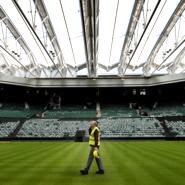Denis Menchov managed to defend his lead through the last stage of the Giro d'Italia yesterday, a time-trial through the streets of Rome in which Bradley Wiggins, of Britain, came a mere second from winning. Yet while the Russian was claiming the overall honours, the race in his wake featured the rise and rise of Lance Armstrong.
Armstrong's twelfth place overall may not have threatened Menchov, but his riding in the past week has confounded expectation. When he crashed and broke his collarbone in late March, it seemed reasonable to rule him out of Tour de France contention. After the Giro, he must be firmly ruled back in.
After one of his stronger rides, in the climb up to Blockhaus on Wednesday, Armstrong reported on his Twitter feed: “I feel my condition is improving OK considering I drank beer for four years, crashed hard last month and am an old dog.”
It is hard to disagree with that assessment, although not many Italians will have read his words because the Italian media had long been boycotting the infamous twitterer. As Armstrong returns to the United States today, the twofold conclusion is a mirror image of so much of his past: that the race just completed was a great success in the saddle and a disaster in the media.
Armstrong long ago fell out of love with the French press, but when he arrived in Venice for the Giro's start three weeks ago, it seemed that he had won a new set of admirers. This affection, though, did not make it into the Giro's final week when his riding, at least, would have justified it.
Armstrong was never going to challenge for the podium in the Giro; it was impressive enough, after collarbone surgery, that he even got to the start-line. In the early stages of the race, it seemed he was at worst suffering and at best content just to hang in and work for Levi Leipheimer, his team leader. But in the second week, stage ten in the Italian Alps, some of the old strength was back in his legs and he finished equal sixth, 29 seconds behind Danilo Di Luca, the winner and race leader.
There was more of this the next Monday, when he stayed with the race leaders up the final ascent before dropping back to help Leipheimer.
After that, Johan Bruyneel, Armstrong's team manager, put words to his achievements. “It's exactly what I hoped for,” he said. “I didn't hope for a great result in the Giro. But I hoped that he could be progressing or be close to the favourites in the last week and that's a little bit what's happening. That's actually a lot better than we expected. I would like to see if we can continue this progression, or at least stay at the same level.”
Progress did continue. By Wednesday, Armstrong was significantly stronger than Leipheimer, attacked on his own, did not quite have the strength to catch the leaders but did enough to draw the following endorsement from Gilberto Simoni, a two-time Giro winner: “Armstrong is improving every day. You can see how competitive he is by the way he's pedalling. It's the same style from his seven Tour de France wins. He's going to have a great Tour de France.”
Yet this admiration in the peloton was not mirrored off it. On the tenth stage, in Milan, the riders staged a protest against what they saw as a dangerous race set-up and, with Armstrong standing near the front of the protest, he was perceived to be one of the shop stewards. This sparked off a wave of antipathy that he did little to quell.
The response from Angelo Zomegnan, the race director, was withering. He said that the race “required riders to get their backsides up off the seats of their bikes, and some riders who are not so young any more apparently don't feel like doing that. Instead, it seems like their legs have become shorter and their tongues longer.”
Armstrong did make a formal apology, but the Italian press jumped to the defence of their race, with one newspaper describing him as “an old-age pensioner who's clearly come to Italy for a holiday”.
Thereafter, the love had died. Armstrong refused to speak to the media for the second half of the race, which meant that their only access to him was through his Twitter feed or the occasional piece of hand-held video posted on his website. Not wishing to have his soundbites controlled in such a way, the Italian press then united in boycotting these soundbites altogether.
Armstrong even earned himself a nickname among some of Italian press - “Osama”, because, like bin Laden, the only time they get to hear from him is via his own video messages.
What's next for Lance Armstrong?
He will fly home to the United States today, where his girlfriend, Anna Hansen, is expecting their first baby. He has three children from his previous marriage. He is not expected to ride again in Europe before the Tour de France, which starts on July 4.
He needs to sort out ownership of his cycling team. Astana are owned by the cycling federation of Kazakhstan and funded by Kazakh businesses. Those businesses have been in default of payment, which could lead to Astana having their licence withdrawn before the Tour.
He also needs to practise politics with Alberto Contador. Armstrong may now be a contender for the Tour de France but his biggest rival is Contador, his team-mate, who did not ride on the Giro. Contador and Armstrong will both want to lead their team in France.
Source: The times
Subscribe to:
Post Comments (Atom)











No comments:
Post a Comment